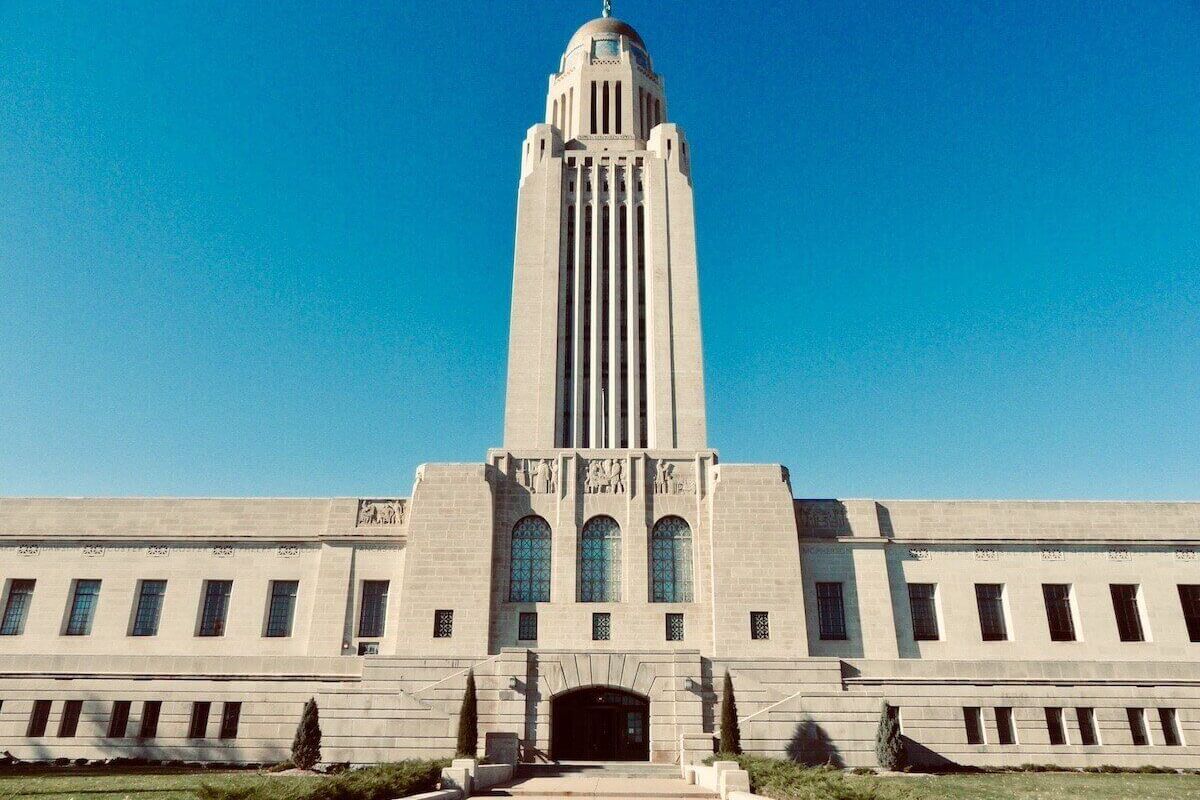Advertiser Disclosure
Last update: November 17, 2024
4 minutes read
Nearly 31,000 Nebraskans Signed Up for New Loan Repayment Plan
Learn how 31,000 Nebraskans save with the SAVE student loan plan.

By Brian Flaherty, B.A. Economics
Edited by Rachel Lauren, B.A. in Business and Political Economy
Learn more about our editorial standards



By Brian Flaherty, B.A. Economics
Edited by Rachel Lauren, B.A. in Business and Political Economy
Learn more about our editorial standards
The new Saving on a Valuable Education (SAVE) program is a hit in Nebraska, with 30,700 residents signing up by mid-October, a big increase from 22,400 in early September.

Key takeaways
- Nearly 30,700 Nebraskans have joined the SAVE program, which tailors payments to income and family size
- The program offers big savings, with enrollees potentially saving an estimated $1,200 annually
- With broad national participation, the SAVE Plan represents financial relief for millions in the U.S.
What is the SAVE plan?
What is the SAVE plan? It’s a type of income-driven repayment plan recently released by the Federal government.
It considers income and family size, capping payments at 5% to 10% of total income, stopping interest accrual, and offering forgiveness after 20 years of payments. Participants save an average of $102 monthly, providing big relief.
This reflects a national trend of 5.5 million borrowers embracing income-driven repayment plans, with 2.9 million borrowers having $0 payments. Let's dive into how the SAVE program works and the enrollment insights shaping this financial relief for Nebraskans and their student loans.
Nebraskans embrace income-driven student loan repayment
Nebraska's student borrowers are flocking to the Saving on a Valuable Education (SAVE) program, which launched this summer. By mid-October, 30,700 Nebraskans had enrolled, according to the U.S. Department of Education. This shows a big jump from 22,400 in early September and reflects a national trend where nearly 5.5 million borrowers have adopted the income-driven repayment plan.
Understanding the SAVE program
The SAVE Plan takes a borrower's income and family size into account to determine their monthly payment rate. It caps payments at 5% to 10% of the borrower's total income. Moreover, for those earning less than $15 an hour, monthly payments can drop to $0, depending on family size.
It’s a move that’s been welcomed by many as it also stops loan balances from increasing due to unpaid interest, as long as payments are made. On top of that, it comes with scaling forgiveness for regular repayment.
Borrowers under SAVE are estimated to save $102 monthly over previous plans. This amounts to an annual saving of over $1,200 in loan repayments — a significant relief to anyone's budget.
Compare private student loans now
TuitionHero simplifies your student loan decision, with multiple top loans side-by-side.
Compare Rates
Enrollment insights
Analyzing the enrollment spread, a hefty 11,000 Nebraskans from the state's second congressional district have opted into SAVE. The first district, including Lincoln, isn't far behind with 9,900 sign-ups, and about 7,100 come from the large third district. A remainder of 2,700 come from unspecified areas within Nebraska.
Financial relief for borrowers
Secretary of Education Miguel Cardona supports the program, stating that it helps people "climb the economic ladder without unaffordable student loan debt weighing them down." The sentiment echoes the experiences of many Americans looking for financial freedom from student debt.
James Kvaal, undersecretary for higher education, echoed these benefits: "The SAVE Plan will significantly cut monthly bills for most borrowers, reduce loan default, and ensure that student loans don't need to come before life necessities." This highlights its effect on borrowers' finances and quality of life.

Why trust TuitionHero
At TuitionHero, we make college finances manageable with private loans, refinancing, and comprehensive guides. As more people choose the SAVE Plan for smarter repayment, we’re here with FAFSA, scholarships, and more. Our tools simplify student debt and financial decisions. Let us guide you through college finances.
Frequently asked questions (FAQ)
Yes, you can switch to the SAVE program even if you're currently enrolled in another repayment plan. However, it's essential to understand what the switch means and how it may affect your overall repayment strategy. The SAVE plan often works better for people with high amounts of debt relative to their income.
While the SAVE program is designed to benefit a wide range of borrowers, some jobs or industries may experience bigger savings. We recommend exploring how the program aligns with your specific financial circumstances and career trajectory.
The SAVE program is structured to consider income variations. For people with irregular earnings, it may be helpful to understand how the program adapts to fluctuations and whether there are provisions for income reassessment during the repayment period.
Final thoughts
The growing popularity of the SAVE program shows progress in making student loan payments more manageable. TuitionHero is here to support you by offering essential knowledge on how to ease the financial burden of higher education. We'll stay updated on the progress and effects of income-driven repayment plans like SAVE.
Source
Author

Brian Flaherty
Brian is a graduate of the University of Virginia where he earned a B.A. in Economics. After graduation, Brian spent four years working at a wealth management firm advising high-net-worth investors and institutions. During his time there, he passed the rigorous Series 65 exam and rose to a high-level strategy position.
Editor

Rachel Lauren
Rachel Lauren is the co-founder and COO of Debbie, a tech startup that offers an app to help people pay off their credit card debt for good through rewards and behavioral psychology. She was previously a venture capital investor at BDMI, as well as an equity research analyst at Credit Suisse.
At TuitionHero, we're not just passionate about our work - we take immense pride in it. Our dedicated team of writers diligently follows strict editorial standards, ensuring that every piece of content we publish is accurate, current, and highly valuable. We don't just strive for quality; we aim for excellence.
Related posts
While you're at it, here are some other college finance-related blog posts you might be interested in.
Shop and compare student financing options - 100% free!

Always free, always fast
TuitionHero is 100% free to use. Here, you can instantly view and compare multiple top lenders side-by-side.

Won’t affect credit score
Don’t worry – checking your rates with TuitionHero never impacts your credit score!

Safe and secure
We take your information's security seriously. We apply industry best practices to ensure your data is safe.
Finished scrolling? Start saving & find your private student loan rate today



